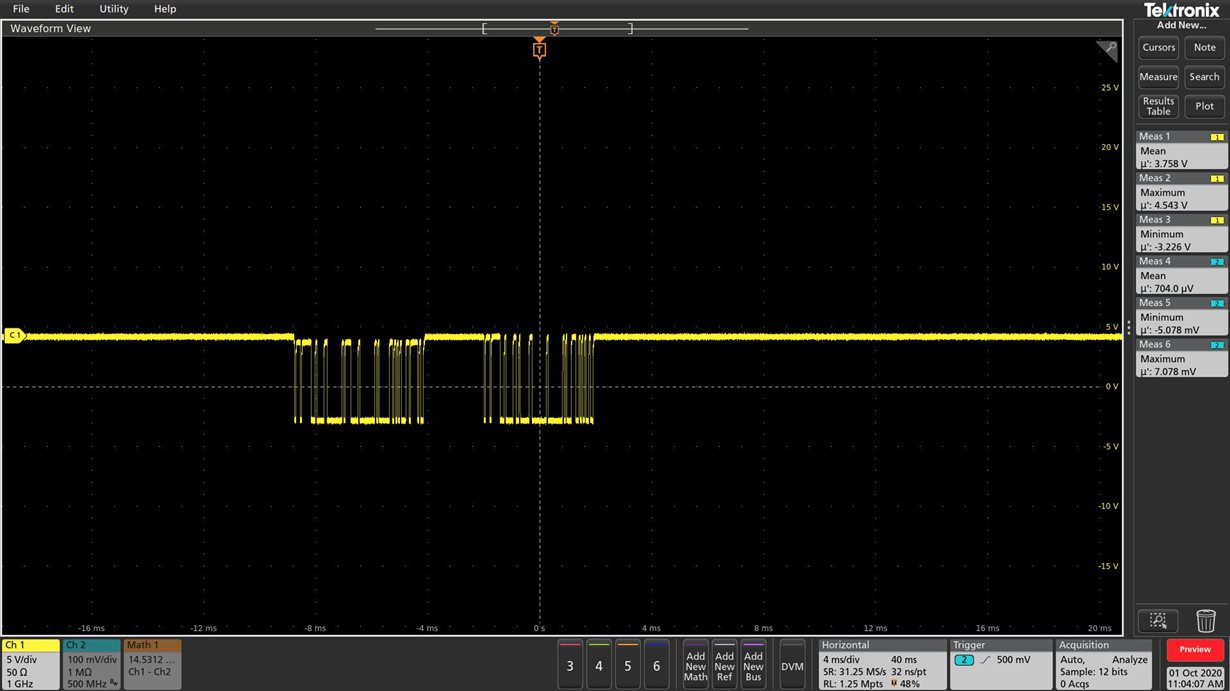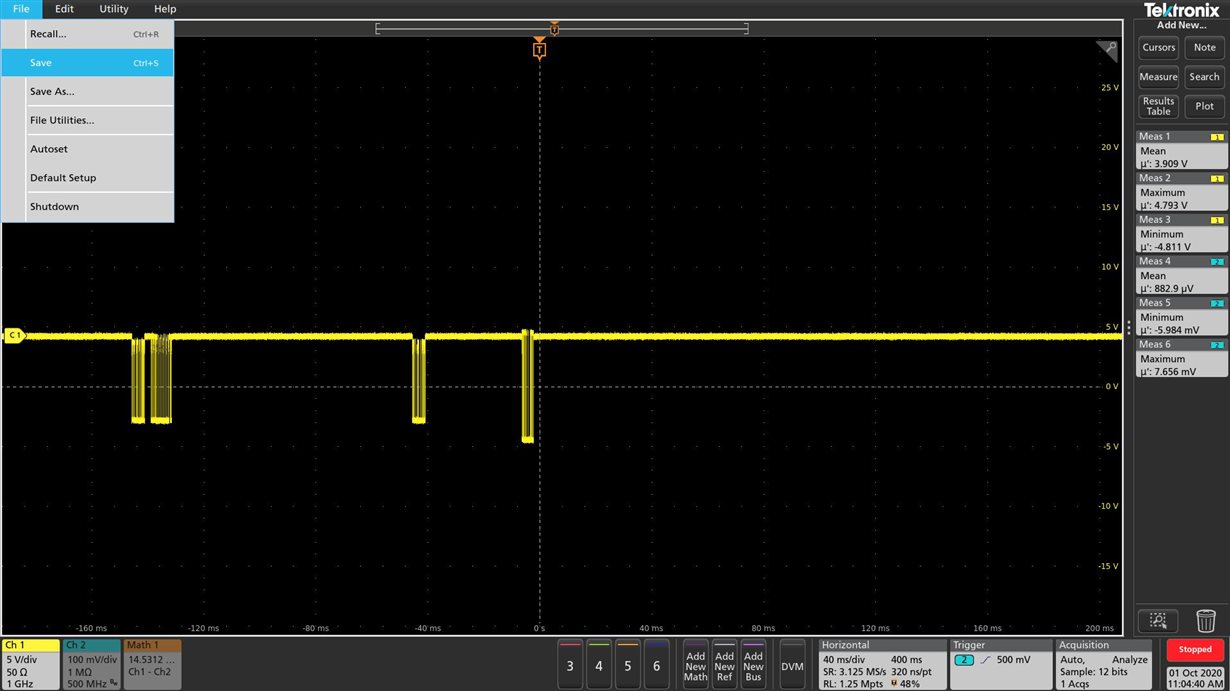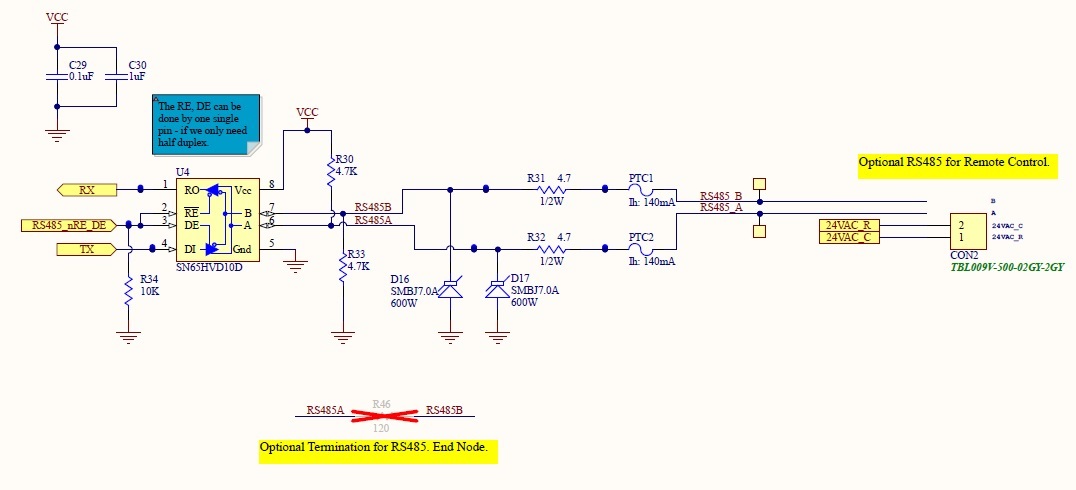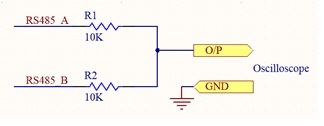Hi TI Support Team,
Can you please help with below concern?
We have SN65HVD10D/RS485 Modbus Interface in our system.
- Line Voltage Fan with Modbus
- VFD (Motor Drive) with Modbus
- Control Board with Modbus
Hence, each part is capable of handling -7V to 12V as per datasheet.
The VFD has different Modbus part and is 5V line voltage with -7V to 12V range with its own fail safe biasing network. But since bus is capable of -7V to 12V, this shouldn’t matter also we have really max. three devices over this bus.
The Fan & VFD has isolated power supply for Modbus while the Control Board does not have any isolated power supply. We have only connected A & B of the Modbus to communicate between the units, basically digital ground is not common reference and it works fine.
Some of the scope captures are measured with the differential probe.
All these components sits inside one metal unit couple of feet away, returning to same electrical earth.
So far, we never had issue running the system and always ran fine around more than one year of testing inside labs and few month of test at various remote sites.
We are not sure if common ground is needed or not moving forward. Since one of the Fan & VFD are isolated, I tried shorting together all the grounds of fan, VFD & the control board but unfortunately, it damaged the Modbus port of the fan. May be we need to have isolated Modbus on control board to tie all the grounds together.
Below is additional note from TI App Engg, which also says common ground is not needed.
https://www.planetanalog.com/signal-chain-basics-84-why-rs485-does-not-need-ground-wires/#
Some of the online information mentions about the measuring the common mode voltage but here in this case we have three ground – Fan Ground, VFD Ground, Control Board Ground.
Can you please help to let me know your thoughts regarding the system? Is there any problem to operate?





